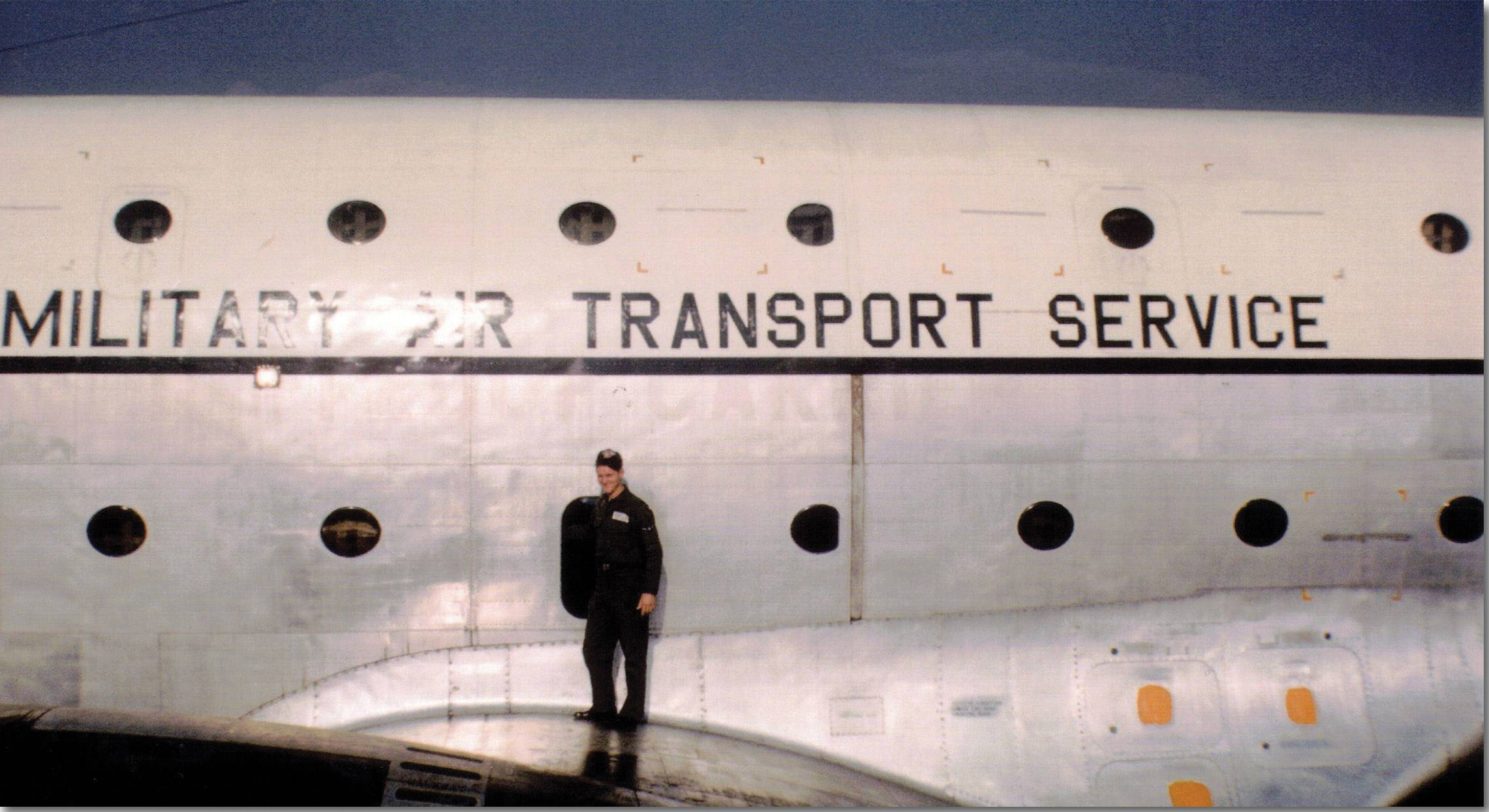Lawrence Olson – Aircraft Mechanic
Lawrence “Shorty” Olson picked up his mechanical skills working with his dad on a farm outside Weldon on the eastern edge of DeWitt County.

Faced at 21 years old with fulfilling his obligation to serve his country, Olson enlisted in the Air Force in January 1959. His work on tractor engines and other implements back home earned him a spot in technical school at Sheppard Air Base in Wichita Falls, after Basic Training at Lackland AFB, both in Texas.
During his two years as a mechanic with the 503rd Flight Line Maintenance Squadron at Tachikawa Air Base outside Tokyo, Olson worked on long-range military cargo planes, including C-97s, C-118s, C121s and C-124s. The unit of 380, including about 120 mechanics, supported troops stationed in Korea.
Olson was the second member of his family to serve on the air base; his uncle Cecil Brown, also a DeWitt County native, was stationed at Tachikawa in World War II. The thin slate walls edged on the top and bottom with rows of mesh screens provided a unique housing experience for the American soldiers.
An early bout of homesickness became more difficult with news from the Red Cross that Olson’s dad, Donald Olson, was battling a blood clot in his lungs. He had a 50-50 chance of survival, the airman was told.
“I was a basket case,” Olson recalled, as days passed with no word on his dad’s condition.
His frayed nerves were calmed after he accepted a buddy’s offer to take him into town via motorcycle to call home. The health crisis had been resolved.
Letters and packages from home kept Olson and fellow airmen up to date on current events and the homemade cookies from his mother, Mary Olson, lifted everyone’s spirits in the barracks.
“My mother averaged five letters a week. I probably hadn’t written three or four letters in my life before the service,” said Olson. But weekly letters and photos snapped with a camera purchased after his arrival on the base soon became the norm. A chance siting of Emperor Hirohito in a parade as he rode in an open carriage is part of Olson’s photo collection.
Like many other airmen, Olson bought a motorcycle for traveling around the island during free time away from his two-days-on, two-days-off, schedule. One of those trips was a two-day trek to the summit of Mount Fuji, Japan’s tallest peak at 12,380 feet. A Mount Fiji sunrise filled Olson’s field of vision one morning, creating a lasting memory of his ascent.
Olson ended his time with the Air Force at Scott AFB in southern Illinois where his duties included crew chief of a C-131A medical transport plane that made the trip to Eglin AFB in Florida for an unforgettable event. President Kennedy was among the dignitaries who traveled to Florida in May 1962 for demonstrations of U.S. Military airpower.
From a distance of about 15 feet, Olson saluted the former president as he passed by in a convertible.
“I remember seeing him as he went by, nodding to us. That stuck in my mind and I’ll remember it to my dying day,” said Olson. Months later, Kennedy would deal with the Cuban missile crisis and avert the threat of war.
Olson returned to Illinois and a career in farming – but not without giving brief consideration to an offer from the Air Force for more training that could lead to flight school.
“I loved it. If I hadn’t come back to farm, I would have made it a career.”
Four decades later, Olson returned to Tachikawa, this time as part of an agricultural market study with the DeWitt County Farm Bureau. The airbase, which was closed in 1977, was gone. But many of the shrines and landmarks from his time in Japan remained.
Travel, training, and an expanded view of the world were all part of Olson’s experience as he left Weldon for four years in the Air Force. The time away from America’s shores also deepened his gratitude.

“It really makes you appreciate the USA more, without a doubt.”
Recent Comments